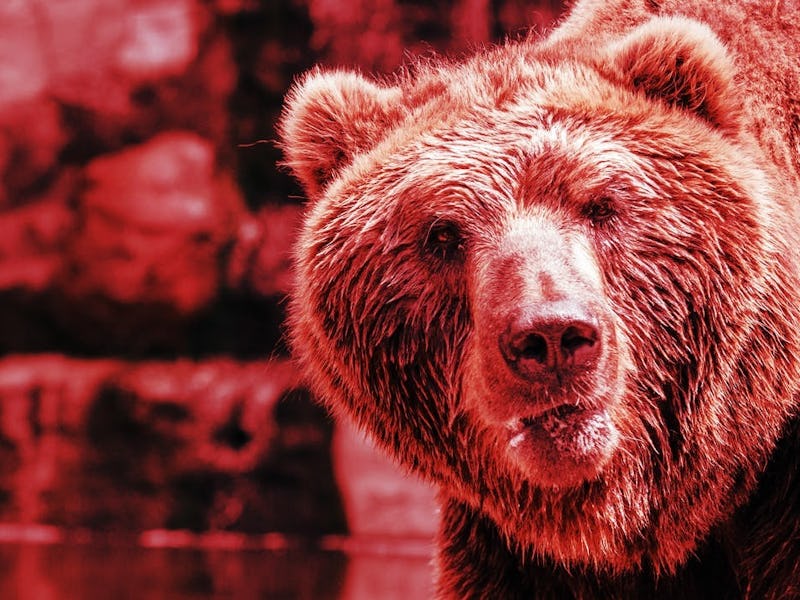Demon Bear That Ran 200 Sheep Off a Cliff Is Perfectly Normal
Bears and farm country just don't mix.

Over 200 sheep launched themselves off a cliff after being pursued by a bear in southern France in mid-July. Of that doomed flock, 170 landed in another country, Spain. Spanish townsfolk may have been horrified to find the battered bodies of the animals strewn about the ground, yet the bear responsible is no deranged animal. It acted precisely as an opportunistic omnivore should.
The European media reports that a brown bear (a large grizzly bear that often consumes fish) is almost certainly culpable, because a similar event occurred last year and authorities found bear fur on one of the dead sheep. The event is gruesome and costly, making it easy to demonize the bear who led the sheep off a cliff, much like the devil drove pigs into a Biblical sea, but it’s not an anomaly. It’s simply an instance of an observant predator making the most of what it’s got.
Basque country, in southwestern France. A most bucolic setting.
Bears will eat anything: Berries, toothpaste, sunscreen, tossed-out burgers, fish, and young ungulates, like elk and sheep, if they can be caught. But chasing prey is not the best use of a bear’s energy: In the summer, a bear’s primary objective is to fatten up in preparation for its upcoming six-month hibernation, when it must slow its heart rate by 80 percent and subsist entirely on its stores of fat. Hunting prey is draining and burdensome, especially because adult herbivores aren’t an easy kill. They will violently struggle and kick their hooves at any attacking predator. For this reason, when bears do hunt, they pursue weak or easy-to-capture prey, as experts at Yellowstone National Park have pointed out:
They are effective predators and prey on vulnerable animals such as elk calves and spawning trout, or small mammals and insects.
In this particularly lurid incident, it’s plausible that the brown bear spotted a young calf among the sheep herd and gave chase, inciting the terrified ungulates to flee to their death. But normally, bears get most of their calories by scavenging. With their long claws and strong shoulders, they’re great at digging, making them particularly well-adapted to consume foods that they don’t have to chase, like pine nuts, berries, grasses, glacier lilies, roots, bulbs, tubers, and dandelions.
Arguably, the bear was just doing what it is genetically predisposed to do: Go for the easy kill.
Brown bears in Alaska using their claws to dig into the coastal soil in search of clams.
In southern France, hunters had completely eliminated native brown bears by 2004, when the last individual was shot. But the government has reintroduced bears into their historic (and prehistoric) range, thereby creating conflict with domestic animals, notably sheep. Following the discovery of the 200 dead ungulates, the French farmer’s group Confédération Paysanne released a statement addressing the problems inherent in this plan:
Pastoralism, which is a guarantor of biodiversity and of a living and welcoming mountain region, is not compatible with the reintroduction of large predators.
The event stokes the flames of the long-running debate between French livestock owners and ecologists about what, if any, is the right number of brown bears that should roam mountains now filled with domesticated sheep. The French government acknowledges that bears will sometimes kill a farmer’s property, and so they compensate these farmers. In this case of 200-plus dead sheep, the compensation will certainly be hefty.
The exact events that led to the deathly scene beneath this French cliff won’t likely ever be known, but what is clear is that the bear, though far from blameless, is hardly guilty.